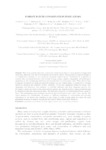Por favor, use este identificador para citar o enlazar este ítem:
http://www.alice.cnptia.embrapa.br/alice/handle/doc/1050056Registro completo de metadatos
| Campo DC | Valor | Lengua/Idioma |
|---|---|---|
| dc.contributor.author | COSTA, T. C. C. | pt_BR |
| dc.contributor.author | FIDALGO, E. C. C. | pt_BR |
| dc.contributor.author | RAID, M. A. M | pt_BR |
| dc.contributor.author | RIBEIRO, J. L. | pt_BR |
| dc.contributor.author | VIANA, J. H. M. | pt_BR |
| dc.contributor.author | FERREIRA, F. N. | pt_BR |
| dc.contributor.author | MIRANDA, G. A. | pt_BR |
| dc.contributor.author | MARRIEL, I. E. | pt_BR |
| dc.contributor.author | OLIVEIRA-PAIVA, C. A. | pt_BR |
| dc.date.accessioned | 2017-06-06T23:54:06Z | - |
| dc.date.available | 2017-06-06T23:54:06Z | - |
| dc.date.created | 2016-08-02 | pt_BR |
| dc.date.issued | 2016 | pt_BR |
| dc.identifier.citation | Applied Ecology and Environmental Research, v. 14, n. 3, p. 711-734, 2016. | pt_BR |
| dc.identifier.uri | http://www.alice.cnptia.embrapa.br/alice/handle/doc/1050056 | pt_BR |
| dc.description | This work presents indicators to assess the conservation status of forest patches in fragmented landscapes. However, how can we evaluate the conservation status of forest patches in order to compare it to a hypothetical situation of well-preserved vegetation without human disturbance? It is possible to measure some ecological processes, like nutrient cycling, canopy, edaphic, topographic and hydrological parameters, as well as landscape attributes, and associate them to conservation status. When the attributes of original well-preserved forest are unknown because they are seldom found, it is possible to compare patches by assessing the variability of their attributes. To this end, parameters related to canopy, soil, topography and landscape were analyzed to establish indicators and their integrated analysis was developed to assess the conservation status of forest patches and identify possible causes of shortcomings or obstacles to reach the conservation status. The study area is located in a Semidecidual Forest region, in Brazil. The methodology was developed considering plots distributed in sites within forest patches. The results allowed the identification of patches in different conditions of conservation and provided information of the factors that contribute to this status, in order to help guide and select the most appropriate measures to mitigate degradation and identify forest conservation strategies. | pt_BR |
| dc.language.iso | eng | eng |
| dc.rights | openAccess | eng |
| dc.title | Forest patch conservation indicators. | pt_BR |
| dc.type | Artigo de periódico | pt_BR |
| dc.date.updated | 2017-06-06T23:54:06Z | pt_BR |
| dc.subject.thesagro | Vegetação | pt_BR |
| riaa.ainfo.id | 1050056 | pt_BR |
| riaa.ainfo.lastupdate | 2020-11-06 -02:00:00 | pt_BR |
| dc.identifier.doi | 10.15666/aeer/ 1403_711734 | pt_BR |
| dc.contributor.institution | THOMAZ CORREA E CASTRO DA COSTA, CNPMS | pt_BR |
| dc.contributor.institution | ELAINE CRISTINA CARDOSO FIDALGO, CNPS | eng |
| dc.contributor.institution | JOAO HERBERT MOREIRA VIANA, CNPMS | eng |
| dc.contributor.institution | IVANILDO EVODIO MARRIEL, CNPMS | eng |
| dc.contributor.institution | CHRISTIANE ABREU DE OLIVEIRA PAIVA, CNPMS. | eng |
| Aparece en las colecciones: | Artigo em periódico indexado (CNPMS)  | |
Ficheros en este ítem:
| Fichero | Descripción | Tamaño | Formato | |
|---|---|---|---|---|
| Forestpatch.pdf | 807,38 kB | Adobe PDF |  Visualizar/Abrir |









